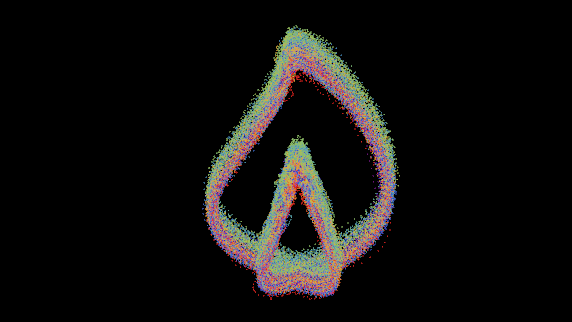Scientists Built a Time Crystal That Lasted for 40 Minutes. That's Astonishing.

"Hearst Magazines and Yahoo may earn commission or revenue on some items through these links."
A relatively new field in physics, time crystals display mind-bending properties—being arranged in repeating patterns like crystals, but in time instead of space.
Although scientists have created many discrete time crystals, only one team has been able to create a continuous time crystal, and for only a few milliseconds.
Now, scientists from TU Dortmund have created one that lasted 10 million times longer, at around 40 minutes.
Time crystals are one of the most mind-bending concepts in modern physics—so mind-bending, in fact, that even their name feels more at home in Middle-Earth than actual Earth.
While the atoms of normal, everyday crystals are arranged in a repeating pattern in space, time crystals are additionally arranged in a repeating pattern in time—essentially, they are crystals existing in a dimension beyond our typical 3D perception. “It’s a way to kind of have your cake and eat it too” said U.S. Nobel laureate Frank Wilczek, who first conceived of time crystals in 2012.
Time crystals are created similar to how many things are created in advanced physics—through the use of super-cooled atoms (i.e. a Bose-Einstein condensates) and lasers. Although this fascinating new phase of matter could have game-changing applications in the world of quantum computing, they don’t tend to survive very long. In 2022, for example, scientists from Universität Hamburg observed a continuous time crystal, but it only lasted for a few milliseconds.
Now, researchers from TU Dortmund University have created a continuous time crystal that lasted 10 million times longer, at around 40 minutes. To use Wilczek’s own words—that’s a lot of cake.
To create this time crystal, TU Dortmund physicist Alex Greilich and his team created a crystal of indium gallium arsenide doped with silicon (a.k.a. a semiconductor). In this crystal, the nuclear spins “act as a reservoir for the time crystal,” according to the university press statement. Once cooled to 6 Kelvin and shot with a laser, a nuclear spin forms as a result of the laser’s interaction with loosely-held electrons.
Then, the polarization of the nuclear spin creates oscillations resembling a time crystal. And amazingly, this repeating oscillation lasted a whole 40 minutes—an order of magnitude far greater than any continuous time crystal that’s come before. The results of this study were published in late January in the journal Nature.
While 40 minutes is quite the achievement, it could also only be the beginning of how long these kinds of time crystals can exist. According to ScienceAlert, this crystal showed no signs of decay in 40 minutes, implying that future time crystals could last for hours, or even longer.
This is all well and good, but... what would we even use these time crystals for? Previous work has suggested that time crystals could find applications in the world of quantum computing, where linked time crystals act as qubits. But as with many amazing breakthroughs and discoveries, scientists don’t really know what uses could be dreamed up in the future—just as the inventors of the in the late 1940s could foresee the iPhone.
Maybe the Earth is a bit more Middle-Earth than we thought.
You Might Also Like
